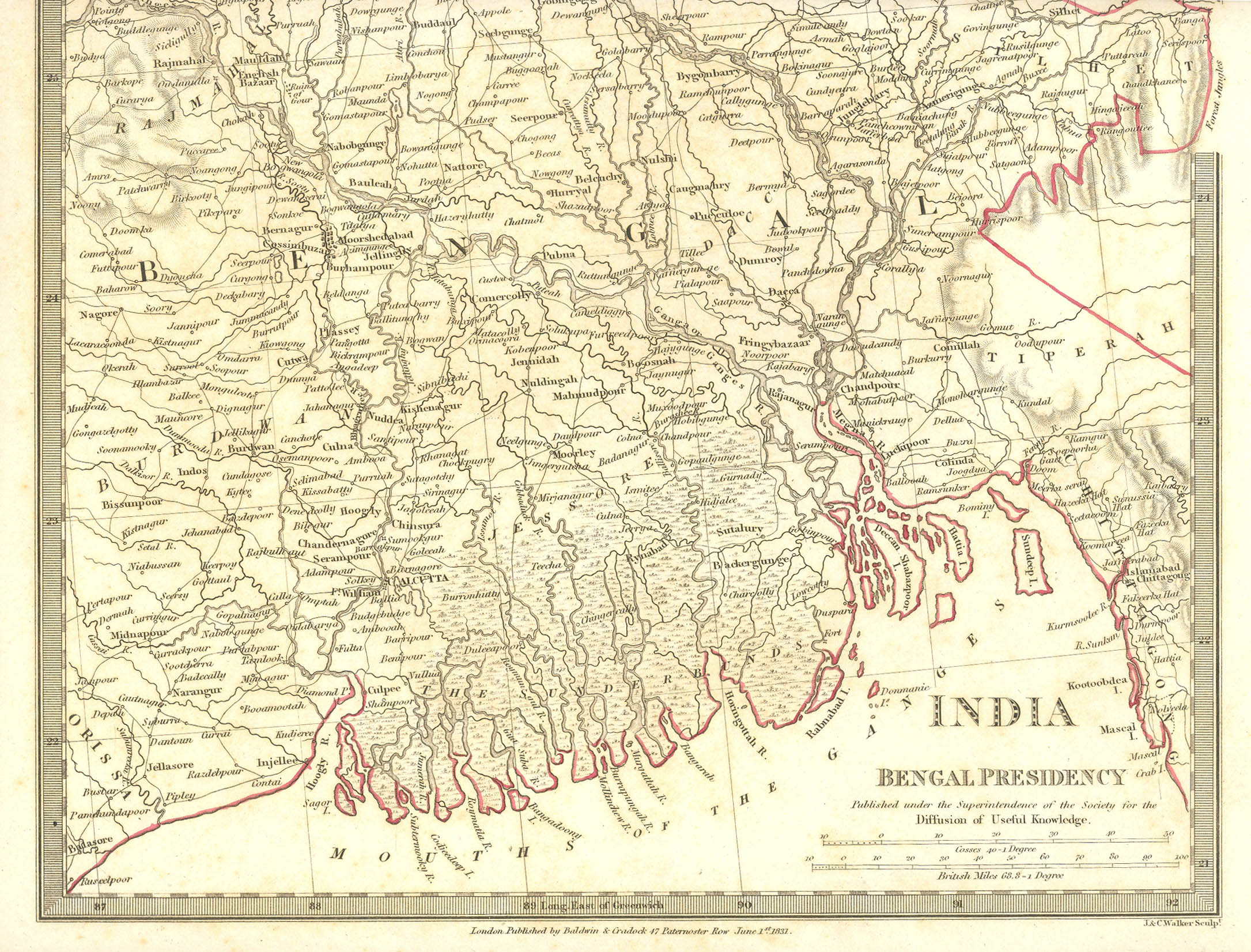Bengal Presidency
The Bengal Presidency (English: Bengal Presidency ) was next to the Bombay Presidency, and the Madras Presidency of the three administrative units of British India.
Geography
The Presidency of Bengal comprised mainly the eastern part of the Indian subcontinent and extended to the territory of modern Bangladesh and the following Indian states: West Bengal, Assam, Bihar, Orissa, Uttar Pradesh, Uttarakhand, Punjab, Haryana, Himachal Pradesh and parts of Chhattisgarh, Madhya Pradesh, Maharashtra, North-West Frontier Province of Pakistan and Burma. Penang and Singapore were also part of the Bengal Presidency until they were in 1867 the crown colony of the Straits Settlements attached.
History
The Bengal Presidency was established in 1684 and administered by the East India Company until it was incorporated in 1858 the British Crown. The seat of government was in the fortress of Fort William in Calcutta. In 1877, Queen Victoria was given the title Empress of India, and the British declared Calcutta the capital of the " crown colony India." On October 16, 1905, India's most populous province of Bengal (one of the most active in the liberation struggle ) divided by the British for administrative reasons - into a western part of the country including Bihar and Orissa with an overwhelming Hindu majority and an eastern part of the country, including the province of Assam with a significant Muslim majority. Indian nationalists saw this division as a means of British colonial masters to sow discord among the Bengali population that had always formed a unity in language and history. After several violent unrest the British revised the partition of Bengal in 1912. His formal end of the Bengal Presidency was with the Montague - Chelmsford Reforms 1919 until 1921.










